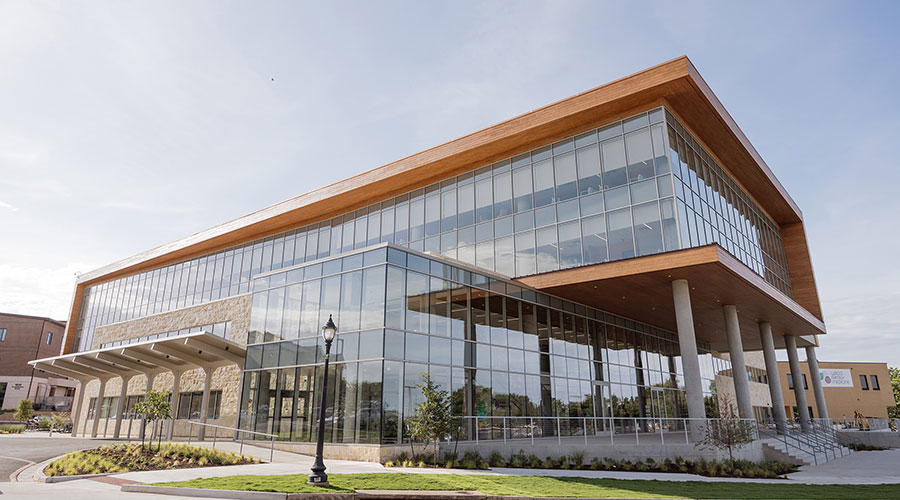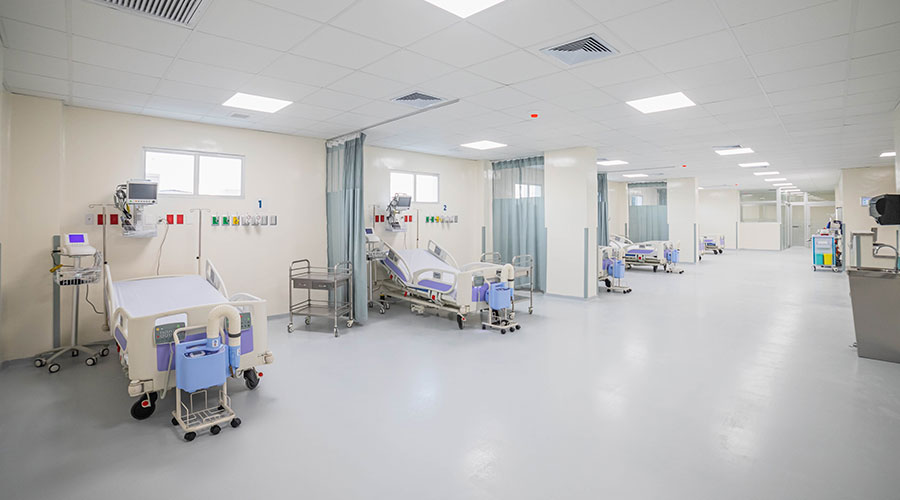The Affordable Care Act (ACA) has had a significant effect on all aspects of the healthcare industry. Healthcare facilities now have even more responsibility for patient satisfaction and care, and interior design has become an extremely important factor.
Patients typically visit healthcare facilities during uncertain and stressful times, so it’s important that design meets functional demands while providing a healthy and comfortable environment. To meet this challenge, facility managers are using technologically advanced paints and coatings that are aesthetically pleasing, offer greater durability and help to improve the overall patient experience in the facility.
Advanced coatings offer broad benefits
Paint used to be selected primarily for aesthetic appeal and reliable performance. However, some of today’s advanced coatings help improve indoor air quality, reduce odors and help keep facilities clean while beautifying and protecting a space for an extended period of time.
Paint can also be used as a wayfinding tool, improving the patient and visitor experience through use of colors that serve as a guide to different locations in a facility.
To maximize advantages for a project, whether choosing paints for ongoing maintenance, new construction or renovation, it’s important to know how and where to use the latest paint technologies. Below is an overview of factors to keep in mind when specifying products for your next project.
Can withstand harsh conditions while extending the lifecycle
Modern healthcare sanitation procedures mandate aggressive cleaning and disinfecting protocols, placing an additional burden on high-traffic areas. Today’s advanced commercial coatings last longer than ordinary wall paints and are designed to withstand persistent cleaning, abrasion and impact, while still maintaining a beautiful finish.
In addition, some modern coatings contain anti-microbial agents that inhibit the growth of mold and mildew on the paint film, as well as inhibit related bacterial odors. This helps minimize deterioration of the paint film, prolonging the life of the coating and reducing the frequency of repaints.
Can improve indoor air quality
Paint choice can have a significant impact on indoor air quality. Breakthrough coating technologies can actually improve indoor air quality by reducing airborne concentrations of formaldehyde and other aldehydes. By reducing volatile organic compounds (VOCs) from possible sources like insulation, carpet, cabinets and fabrics, indoor spaces remain fresher, longer.
Odor eliminating technology is another revolutionary coating advancement that can make a significant difference in healthcare settings. This technology helps neutralize and dissipate common indoor odors of organic origin, improving patient comfort and satisfaction.
Invest in paint to enhance your facility
Advanced coatings can help facility managers score high marks while enhancing the overall patient experience. Look for coatings that deliver aesthetics, performance and innovation as they protect the interior spaces of the facility, reduce repaints due to an extended lifecycle and enhance surroundings for greater patient and employee satisfaction.
Joe Kujawski in the director of marketing, healthcare, for Sherwin-Williams.

 Designing Hospitals for Wellness
Designing Hospitals for Wellness Baptist Health Announces New Cancer Care Center in Key West
Baptist Health Announces New Cancer Care Center in Key West Waco Family Medicine Achieves Savings and Bold Design with Wood Selections
Waco Family Medicine Achieves Savings and Bold Design with Wood Selections Alleged Ransomware Administrator Extradited from South Korea
Alleged Ransomware Administrator Extradited from South Korea Design Plans Unveiled for New Intermountain St. Vincent Regional Hospital
Design Plans Unveiled for New Intermountain St. Vincent Regional Hospital